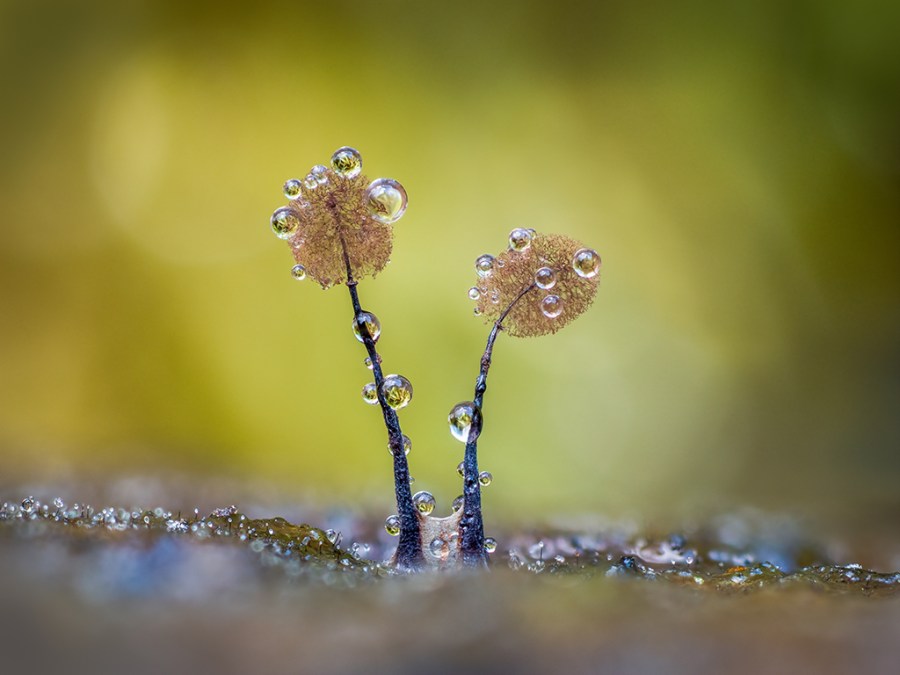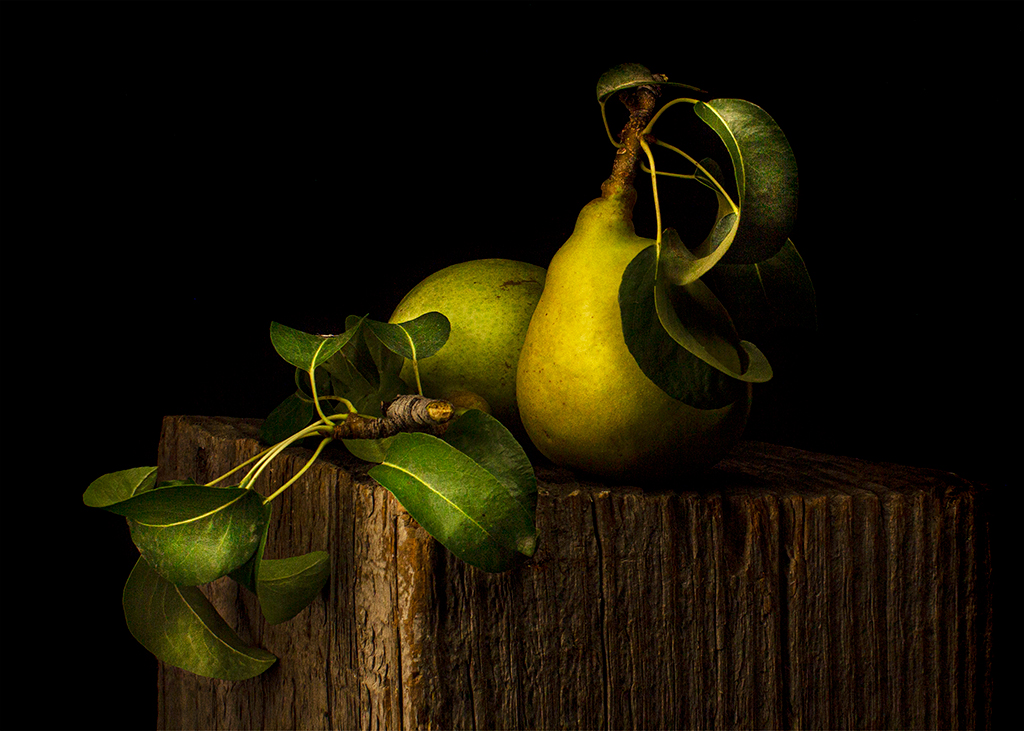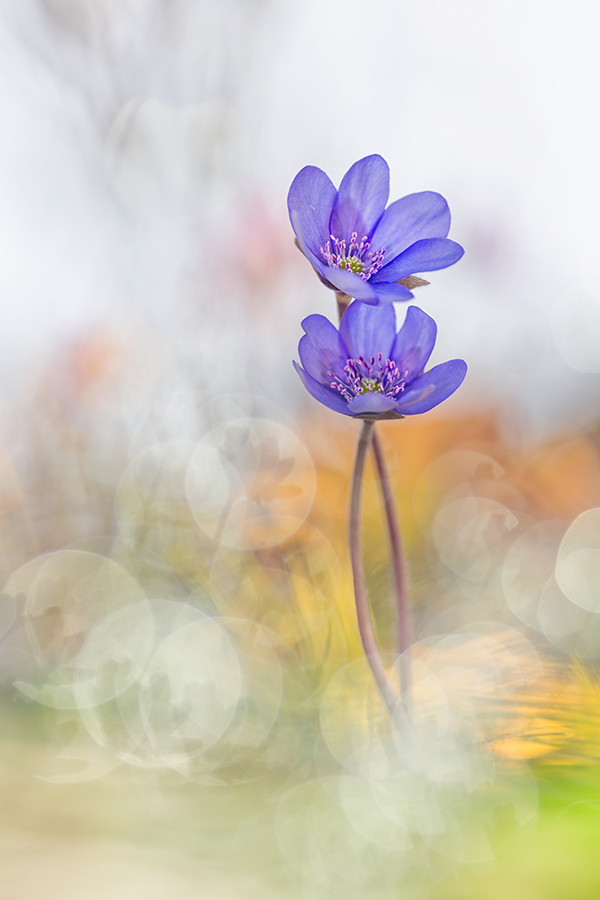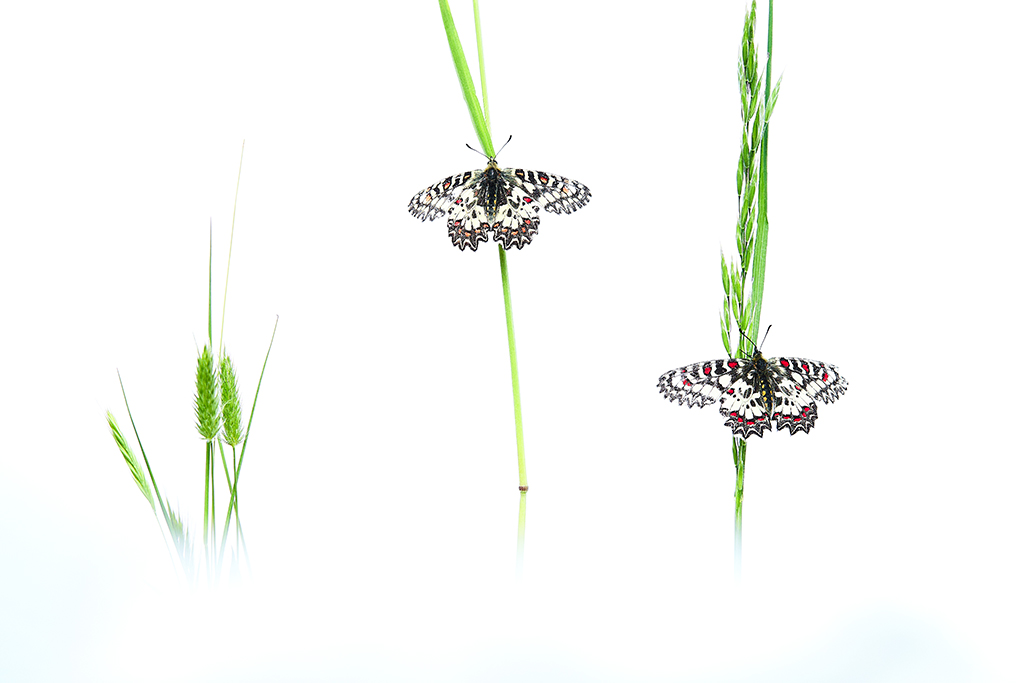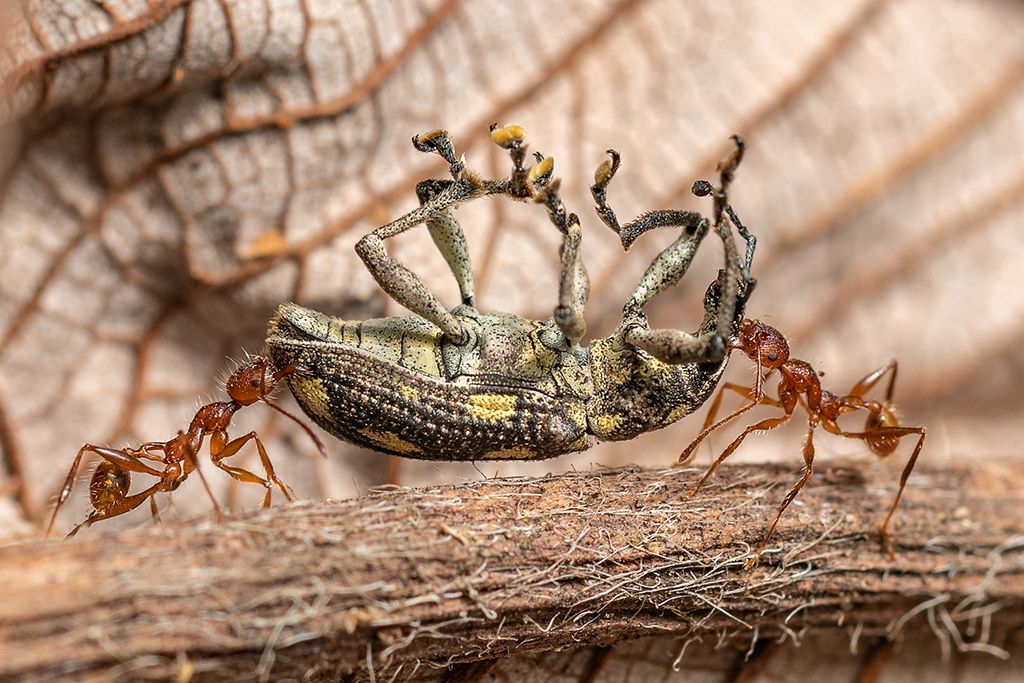The results of the Two of a Kind CUPOTY Challenge are in. The winner and a selection of finalists share their tips and techniques with competition co-founder Tracy Calder
We’ve all read articles about the ‘rules’ of composition: fill the frame with your subject, direct the eye with leading lines, stick to the rule of thirds etc. Most of the time these rules work wonders, but successful pictures are a result of technical ability and creative input, and following the rules too slavishly can sometimes lead to predictable, routine results.
One of the rules that painters, designers and photographers often follow encourages us to use an odd number of elements in the frame (often three). The theory goes that the human brain likes to group and organise objects in order to make sense of them quickly. When we include an even number of elements in the frame the brain has to decide which to look at first and the eye often darts from one thing to another, unable to prioritise or settle.
Rules, however, are made to be broken and for this CUPOTY CHALLENGE (in association with Affinity Photo) we asked photographers to ignore odd numbers and instead embrace the power of two. Entrants were asked to supply pictures featuring two similar things – anything from a pair of animals to a duo of cells or flowers. When viewed together they form an inspirational gallery showing what can be achieved when you become a creative rule-breaker!
This year’s Close-up Photographer of the Year (CUPOTY) will be opening towards the end of February – for more details visit www.cupoty.com and sign up to the newsletter. All the shortlisted entries for the second CUPOTY CHALLENGE can be seen here too. CUPOTY is supported by Affinity Photo – image editing software for creative professionals.


CUPOTY Two of A Kind Overall Winner
Alex Pansier, True Love
www.alexpansier.com, Instagram: @alexpansier, Facebook: alex.pansier
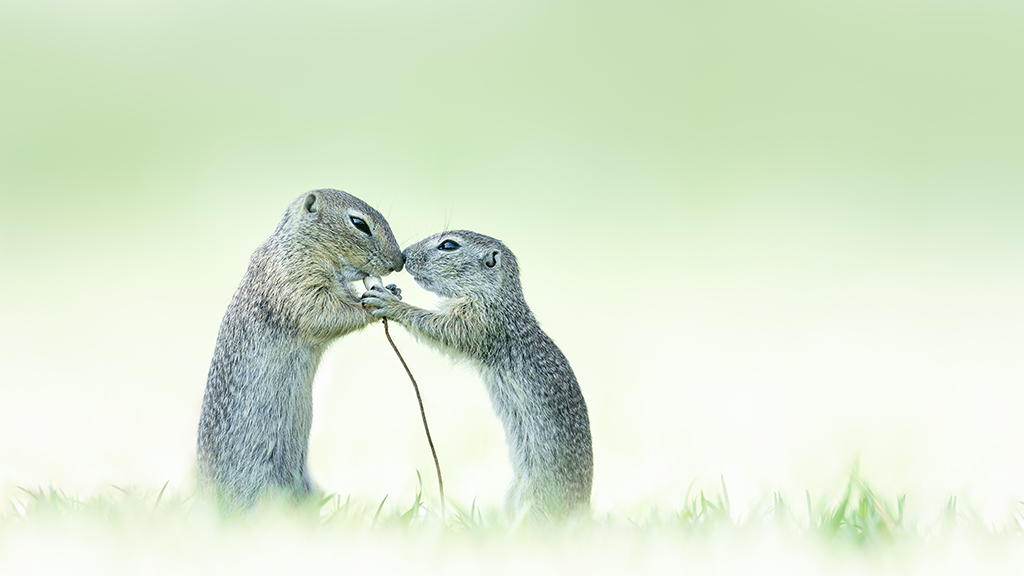
CUPOTY Two of A Kind Overall Winner Alex Pansier. Sony Alpha 9, Sony 400mm f/2.8, 1/500sec at f/3.5, ISO 400
‘European ground squirrels are classified as vulnerable, mainly due to habitat loss. These two were busy eating a faded poppy on a lawn in Vienna. I really enjoyed watching them working together, like father and son. For me, observing and photographing nature is a great way to unwind and share the beauty that’s all around us. I prefer compositions that are simple and pared back, and I usually shoot on dark and moody days, although this image has a lighter feel.’
Top tips
1. Be patient and always respect nature.
2. Adopt a low camera angle because this helps to convey a sense of intimacy with your subject.
3. Give the background as much consideration as the foreground, and check for any distractions.
CUPOTY Two of A Kind Second place
Barry Webb, Mature Comatricha
www.barrywebbimages.co.uk, Instagram: @barrywebbimages
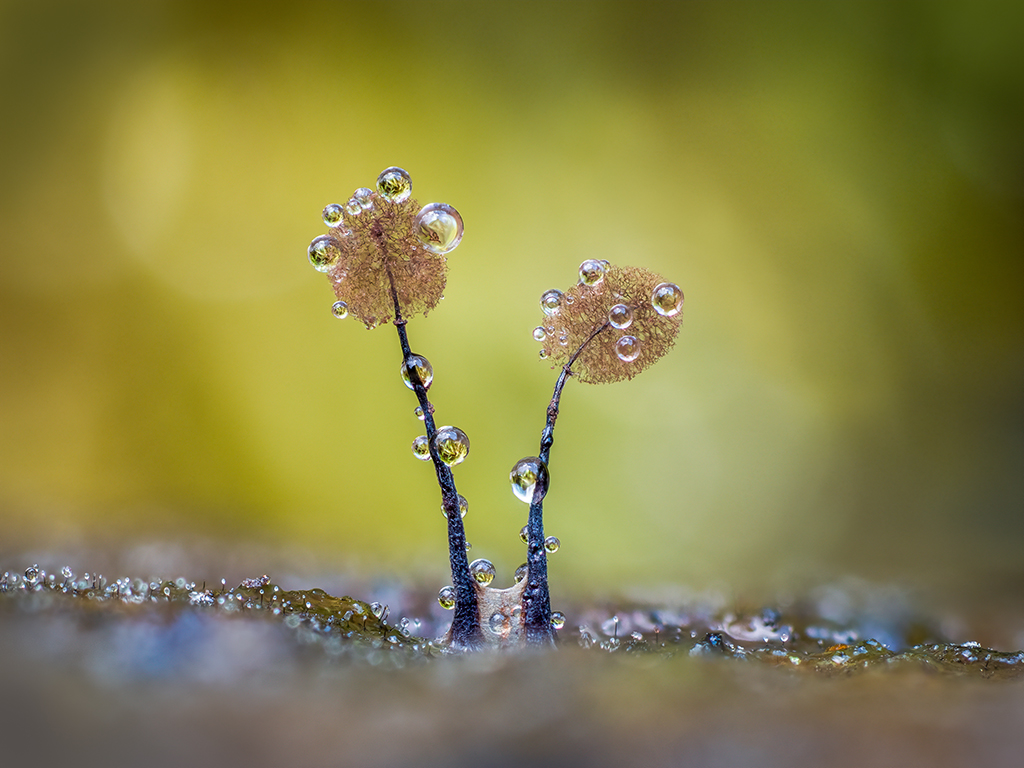
CUPOTY Two of A Kind Second place, Barry Webb. Olympus OM-D E-M1 Mark II, Olympus 60mm f/2.8 Macro (with extension tubes and Raynox 250), 1/5sec at f/4, ISO 200
‘These tiny (2mm tall) slime moulds were found on a dead apple branch, from a log pile in my back garden in Buckinghamshire. The spores have dispersed, leaving the delicate, thread-like capillitium. I carefully lifted the branch onto a garden bench and arranged some moss behind it to create a pleasing, natural background. The picture was taken in natural light and is the result of a 56-shot focus stack.’
Top tips
1. Try to shoot in the shade to avoid excessive highlights in water droplets.
2. When shooting delicate structures like these, it’s important to have a simple background that’s not distracting.
3. Use a tripod and cable release to avoid any camera movement.
CUPOTY Two of A Kind Third place
Julia Briggs, Leaves of Lace

CUPOTY Two of a Kind Third place, Julia Briggs. Nikon D750, Sigma 105mm f/2.8, 1/200sec at f/22, ISO 100
‘The amazing detail and intricate patterns found in leaf skeletons remind me of lace, and that’s what I was trying to capture here. I placed two leaves on a black background next to a glass door in my conservatory, which gave me plenty of natural light. Having positioned the camera on a tripod directly overhead, I began experimenting with different compositions.
Eventually I settled on this arrangement because I liked the way that the ends of the leaves seemed to bend towards each other. To bring out even more detail I used a burst of flash, which I diffused.’
Top tips
1. Use a tripod to keep everything steady and improve your chances of a sharp shot.
2. Don’t overcomplicate things – keep the composition nice and simple.
3. A burst of flash can be helpful but consider diffusing it so the light isn’t too harsh.
Finalist
Heidi Egerman, The Pear-fect Pair
www.heidiegerman.com, Instagram: @hegerman, Facebook: heidiegermanphotography, YouTube: Heidi Egerman
‘This image is part of a series called Harvest. The pears were grown in my garden and picked before they reached the peak of ripeness. I left the stems and leaves on to add interest. To give the feeling of an old Dutch Masters painting, I used a light painting technique. The room was made extremely dark before setting a long exposure on the camera and “painting” specific areas of the arrangement with a flashlight (diffused). This technique takes a lot of trial and error to get right, but I think it’s worth it.’
Top tips
1. For light painting, make sure you are in a dark environment. Ambient light can affect the results.
2. Experiment with exposure times, ISOs and light sources. Light painting takes a lot of practice, but once you get the hang of it, it can be magical.
3. You can control the direction or angle of the light with deliberate hand movements, enhancing the shape and texture of objects.
Finalist
Rob Blanken, Toad Love
www.robblankenphotography.com, Instagram: @rob_blanken, Facebook: rob.blanken.5, Flickr: robblanken
‘Loads of common toads (Bufo bufo) come to mate in a small lake in Drenthe, the Netherlands, where this image was made. Here, the male is clutching the female in a tight embrace. When I spotted these two, I especially liked the egg string; it looked like a present from the male to the female. I converted the image to b&w for a more intimate feel.’
Top tips
1. Do your research – common toads migrate to the pond they were spawned in to mate. Male toads also occasionally fight each other, providing plenty of opportunities for unusual pictures.
2. Use a polariser to remove reflections. If light levels are low consider flash.
3. Be patient. Just sit, wait and observe.
Finalist
Henrik Spranz, The Couple
www.spranz.org, Instagram: @henrik_spranz, Facebook: fotomat, Twitter: fotomat_at
‘Liverleaves are early bloomers and one of the first wildflowers I photograph every year. On this occasion (at the beginning of April) the sky was hazy, so I decided to photograph the liverleaves on a hilltop, set against the sky. I paired natural light with flashlight to achieve attractive bokeh, while still keeping the overall feel of the image soft and natural. I used a wide aperture on a long macro lens to increase this dreamy feel. Focusing isn’t easy in these conditions, but with live view and manual focus it’s manageable.’
Top tips
1. Look for flowers that are elevated in some way. You can get some lovely shots on a hazy day with the sky as a backdrop.
2. Pair natural light with flashlight, but don’t point it directly at the flower.
3. Shoot away from the sun and use a diffuser to soften the light on the flowers.
Finalist
Carlos Pérez Naval, Over the Mineral World
Instagram: @carlospereznaval
‘Natural wonders occur all around us, but most of the time we don’t even notice. I spotted these two yellow ladybugs (Psyllobora vigintiduopunctata) on a wall close to my school in Calamocha, Teruel, Spain. The insects themselves are pretty enough – with their bright yellow bodies and black spots – but it’s the mineral world below them that really makes this picture for me. The “drawings” in the rock are actually mineral precipitations of manganese oxide.’
Top tips
1. Pay attention to small details – many natural wonders happen right in front of our eyes without us realising it.
2. Even the most mundane places can host surprises, so keep your eyes open.
3. If a picture doesn’t work first time, be patient and keep trying.
Finalist
Angi Wallace, The Kiss
www.angiwallacephotography.com, Instagram: @angiwallacephotography, Facebook: AngiWallacePhotography
‘The details and pretty textures on the buds, leaves and unfurling flowers of the cyclamen in my garden really appealed to me. In this instance, the little nodding heads were forming a wonderful heart shape. I decided to isolate the blooms while keeping the surroundings soft and dreamy.
To do this, I placed an out-of-focus print I’d made of some flowers about 2ft behind the cyclamen and added more pots of flowers in between. I then carefully placed petals in front of my lens to give a subtle pink haze. It took a focus stack of 18 images (and a burst of fill-flash) to get what I wanted.’
Top tips
1. Think about how your foreground and background can help accentuate your subject.
2. If you want to focus stack outdoors then be prepared. Choose a day with low wind to minimise movement, take something to lie on and consider how best to light your subject.
3. Look for bits of dirt or stray pieces of vegetation that might prove distracting in the final picture. I use a small pair of scissors and a paintbrush/blower to remove loose detritus.
Finalist
Javier Lafuente, Hidden Treasures
www.javierlafuentephoto.com, Instagram: @javierlafuentephoto
‘Having located two Spanish festoon (Zerynthia rumina) butterflies at sunrise in Bustarviejo (a small village in the mountains of Madrid, Spain), I knew I had to act fast. At times like this you only have a few minutes to set up your equipment and fire off a few frames before the insects warm up and fly off. I used a piece of white cardboard for the background, which I illuminated with two Godox HSS flashes. I had a desired image in mind, and I’m pretty confident with flash, which helps when time is against you!’
Top tips
1. Time is of the essence when you’re photographing butterflies, so make sure you do your homework and research their habitat and behaviour.
2. Have an image in your mind’s eye – it will save you valuable time in the field. Also, have all of the necessary equipment primed and ready.
3. You need to have a basic understanding of light – its properties, attributes etc – as well as flash to create a picture like this. There won’t be time to test things out in the field.
Finalist
Pål Hermansen, The Fight
‘Male European stag beetles (Lucanus cervus) use their sizable mandibles to impress potential mates and fight off rival males. I spotted these two sparring in southern Sweden, one of only a few locations in Scandinavia where populations can still be found. In early June the males appear in the oak forest, but their arrival is tinged with sadness because this iconic species is now on the IUNC red list as it’s considered “Near Threatened”. Numbers are declining across most of Europe due to habitat loss.’
Top tips
1. Do your research – it’s the only way to make sure you’re in the right place at the right time.
2. Fighting beetles make for great pictures, but this kind of behaviour is often hard to spot. You need to spend time searching and observing.
3. Where possible, include the surrounding environment in your pictures. When I’m shooting insects that are relatively big, like these beetles, I use a wideangle macro lens to achieve this.
Finalist
Roman Willi, Teamwork
www.romanwilli.com, Instagram: @romanwilliphotography, Facebook: romanwilliphotography, Twitter: romanwilliphoto, Flickr: 151534738@N06/
‘I saw two ants carrying a weevil in Monteverde, Costa Rica, and quickly took a shot from afar – I wanted to make sure I got at least one picture of this special moment. When I approached closer to get a better picture, the ants were already gone. As a result, the image is cropped quite a lot. I used flash and a DIY diffuser to freeze the action.’
Top tips
1 If you spend a lot of time with the same species, you’ll eventually capture some interesting or unusual behaviour, so get to know your subject.
2. Sometimes you get lucky, but if you put in the time and effort you might find that you get lucky more often!
3. You need to be ready to take a picture at any moment, because every millisecond counts in wildlife photography – so be prepared.
Related Articles:
Best photography competitions to enter in 2021
30 common macro mistakes and how to avoid them
How to use light for close-up photography
Behind the scenes of Close-up Photographer of the Year 03 Images

